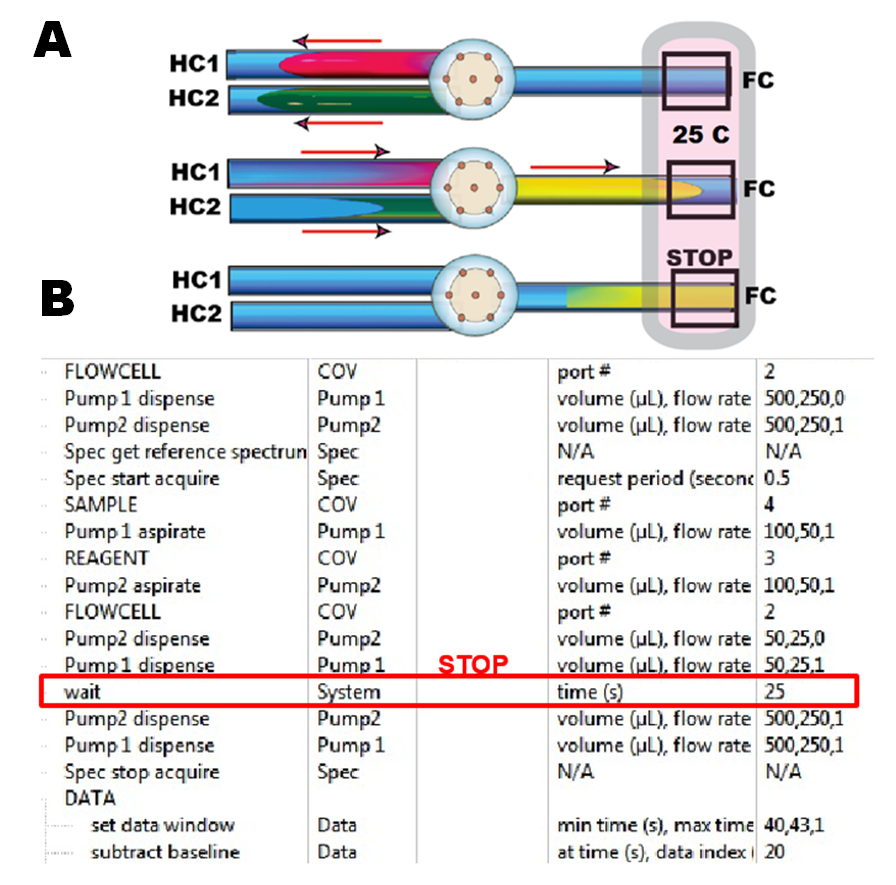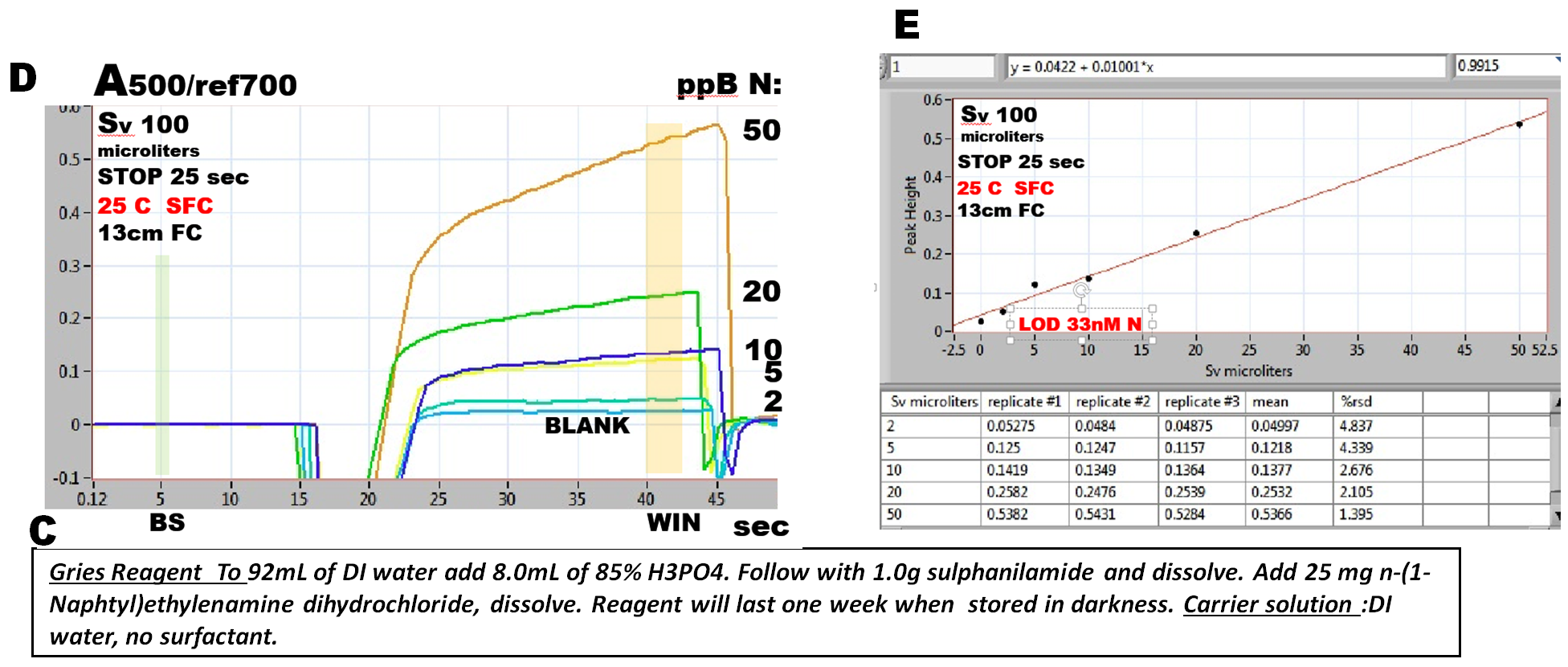pFI: Single Reagent Assay by SFC: Nitrite
No Transfer
This, simplest assay protocol is designed to bring sample and reagent into a flow cell rapidly with aim to maximize detector response by capturing chemical reactions from the very beginning. The protocol (A) comprises three steps:
1) sample aspiration in HC1,
2) reagent aspiration in HC2,
3) simultaneous transport of reactants into flow cell, where a selected section of reaction mixture is attested by stopping the flow for monitoring.
The colorimetric assay for nitrite based on Gries reaction, whereby nitrite is converted into red azo dye monitored at 540nm, widely applied for assay of nutrients (nitrite and nitrate) is used here to test feasibility of this pFI protocol. The software script (B), defines sample volume of 100mcrL and stop flow period of 25 sec. The composition of reagents (C) was the same as in the traditional cFI technique, except that DI water was used as carrier.
Calibration run (D) shows six superimposed response curves, comprising initial baseline, a dip, due to refractive index between DI and reagent, and reaction rates with increasing slopes. The calibration graph (E) was obtained by automated data collection and by plotting difference of A values between baseline (BS) and end point located in the window (WIN). The average rsd. of 3.0% (E) is comparable with performance of the traditional cFI and mini SI., and is consistent with performance of a similar assay for glucose discussed on the next page.
1.2.32.











